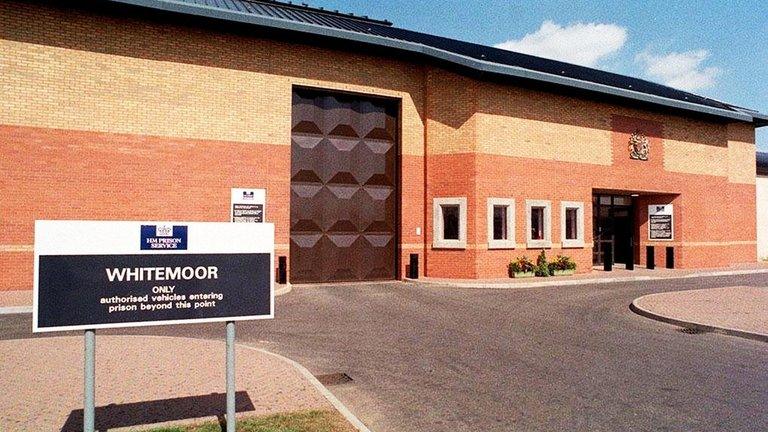Why the surge in Muslim prisoners?
- Published
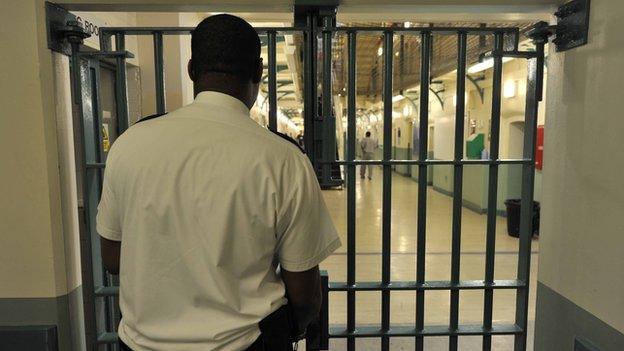
It's a crime mystery.
Why has there been a surge in the number of Muslim prisoners?
In 2002, 5,502 prisoners in England and Wales said they were Muslim.
Three years later, the number had risen to 7,246 and almost a decade on, by December 2014, it had reached 12,225.
OK, I hear you say, the overall prison population has also increased, so what's the big deal?
Indeed, prisoner numbers have risen from an average of 70,778 in 2002 to 84,691 last December.
But that 20% increase in the jail population has been outstripped by the rise in Muslim inmates - up 122%.
One possible explanation for the rise is that there are now more Muslims in the general population.
In the 2001 census, 3% of people in England and Wales said they were Muslim - 1.55 million.
By 2011, that had gone up to 4.8 % - 2.7 million people - so you'd expect the numbers in prison to go up too.
Not terrorists
But the percentage rise in Muslim prisoner numbers has been far greater than the Muslim population increase: Muslim inmates now account for 14.4% of those behind bars, compared with 7.7 % in 2002.
The media focus on terrorism might lead some to think that the Muslim prisoner population increase is linked to convictions of Islamist extremists.
But the figures don't bear that out either.
Ministry of Justice data shows that between October 2012 and January 2015, there were 104 Muslims out of 178 prisoners who'd been jailed for "terrorism-related offences where the motivation stemmed from extreme ideology" - less than 1% of the total Muslim prisoner population.
Another factor that's cited is the increasing number of foreign national prisoners: there were about 10,500 last year - one in eight of the total prisoner population.
A Ministry of Justice analysis in 2013, external suggested that a significant minority, 30%, of Muslim prisoners weren't British - last year the top 10 overseas nationalities included inmates from two predominantly Muslim countries: 522 from Pakistan, 417 from Somalia.
It does lend some support to the theory that as the UK's ethnic and population mix has changed, driven by rising levels of immigration, travel from abroad and births to foreign-born mothers, so the prison population has become more diverse, with greater numbers of Muslims.
Socio-economic factors
But there appear to be underlying reasons too.
In 2010, the then Chief Inspector of Prisons, Dame Anne Owers, published a report on Muslims in jail, external, in which she linked the growth in numbers to the age and socio-economic profiles of the Muslim population in general.
"Both are powerful predictors of involvement in the criminal justice system," she wrote, "and Muslims in Britain have a notably younger age profile than non-Muslims and are more likely to come from lower socio-economic groups."
Last year, 58% of Muslim prisoners were aged 30 or under, compared with 45% of the overall population, and in what's termed the "secure youth estate" - institutions which hold 10- to 17-year-olds - almost one in five prisoners was Muslim.
Amal Imad, a researcher for the charity Muslim Aid, agrees with Dame Anne's findings from five years ago that poverty - in particular not having enough money to feed a family - is a key factor driving crime, and therefore imprisonment, among Muslims.
"The underlying issue is economic crisis," she says.
'Negative stereotyping'
In a major report last year, Lady Lola Young of Hornsey, external reached similar conclusions about the reasons for the disproportionate representation of Muslim men at all stages of the criminal justice system.
"They are more likely to be stopped and searched, more likely to plead not guilty and more likely to be tried.
"These disparities... are often part of a complex mix of educational, employment, health and social inequalities that have characterised many of their lives," says Lady Young.
But her study - funded by the Barrow Cadbury Trust, an independent charitable group - also points to evidence of something more disturbing: discrimination. It says policy-makers and politicians haven't "fully grasped" the impact of "negative stereotyping" and "cultural difference".
Lady Young says: "Most of the prisoners we met with all said that they experienced differential treatment as a result of their race, ethnicity or faith.
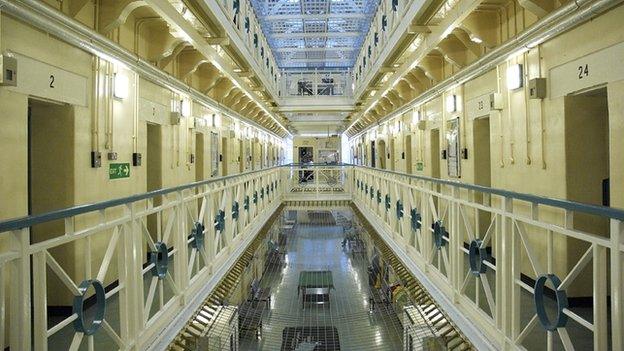
"Black prisoners felt that they were stereotyped as drug dealers and Muslim prisoners as terrorists."
Could it be that negative stereotypes and institutional discrimination, or "Islamaphobia", as it's referred to, is fuelling the increase in Muslim prisoner numbers?
Amal Imad, from Muslim Aid, doesn't think so. She says it's the media that tends to stereotype Muslims - not criminal justice agencies.
"I don't believe the justice system is unfair.
"If they're being convicted there must be a reason for that," she says.
One of Britain's few Muslim MPs, Sadiq Khan, is determined to get to the bottom of it - asking more parliamentary questions about Muslim prisoners than any other member.
'Breathtaking' complacency
The shadow justice secretary promises that if Labour are elected, they'll put in place a "national strategy" to address the issue, claiming the government has been "utterly clueless" about the growing Muslim population .
"Their complacency is breathtaking," he says.
In response, the Ministry of Justice says the government is committed to ensuring the criminal justice system is "fair, inclusive and impartial, and represents and serves the whole community".
In a statement, the department says: "Each prison has a multi-faith chaplaincy team to meet the religious and pastoral needs of all faiths, including Muslims, and we expect every prisoner to engage in purposeful work and rehabilitation to give them the opportunity to turn away from crime for good."
Few would disagree with that - in fact, the reoffending rates of Muslim prisoners are already substantially lower than others, at about 36% compared with 45% .
But it seems we've only just started understanding the reasons why so many are locked up in the first place.
- Published7 August 2013
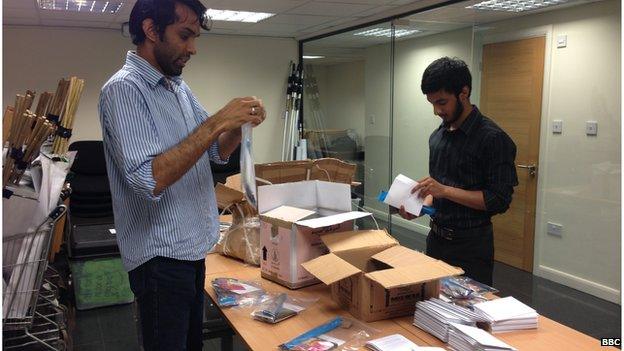
- Published12 May 2014
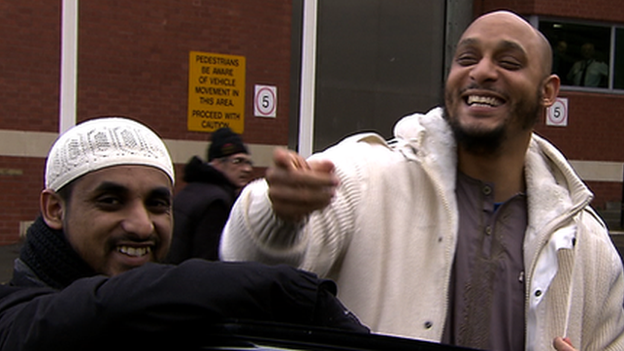
- Published7 December 2012
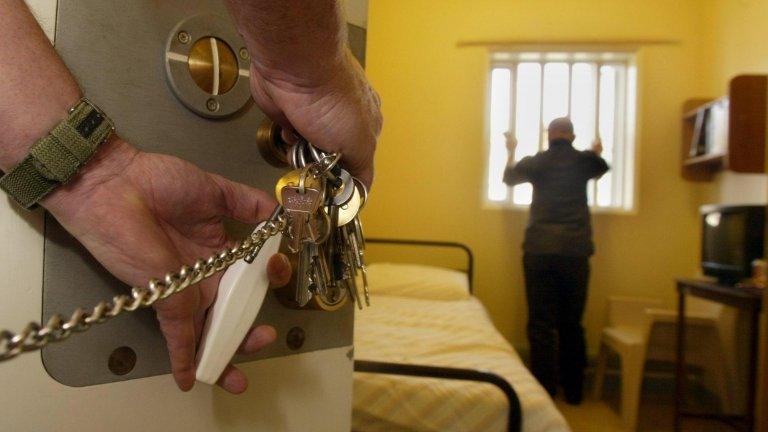
- Published22 May 2014
